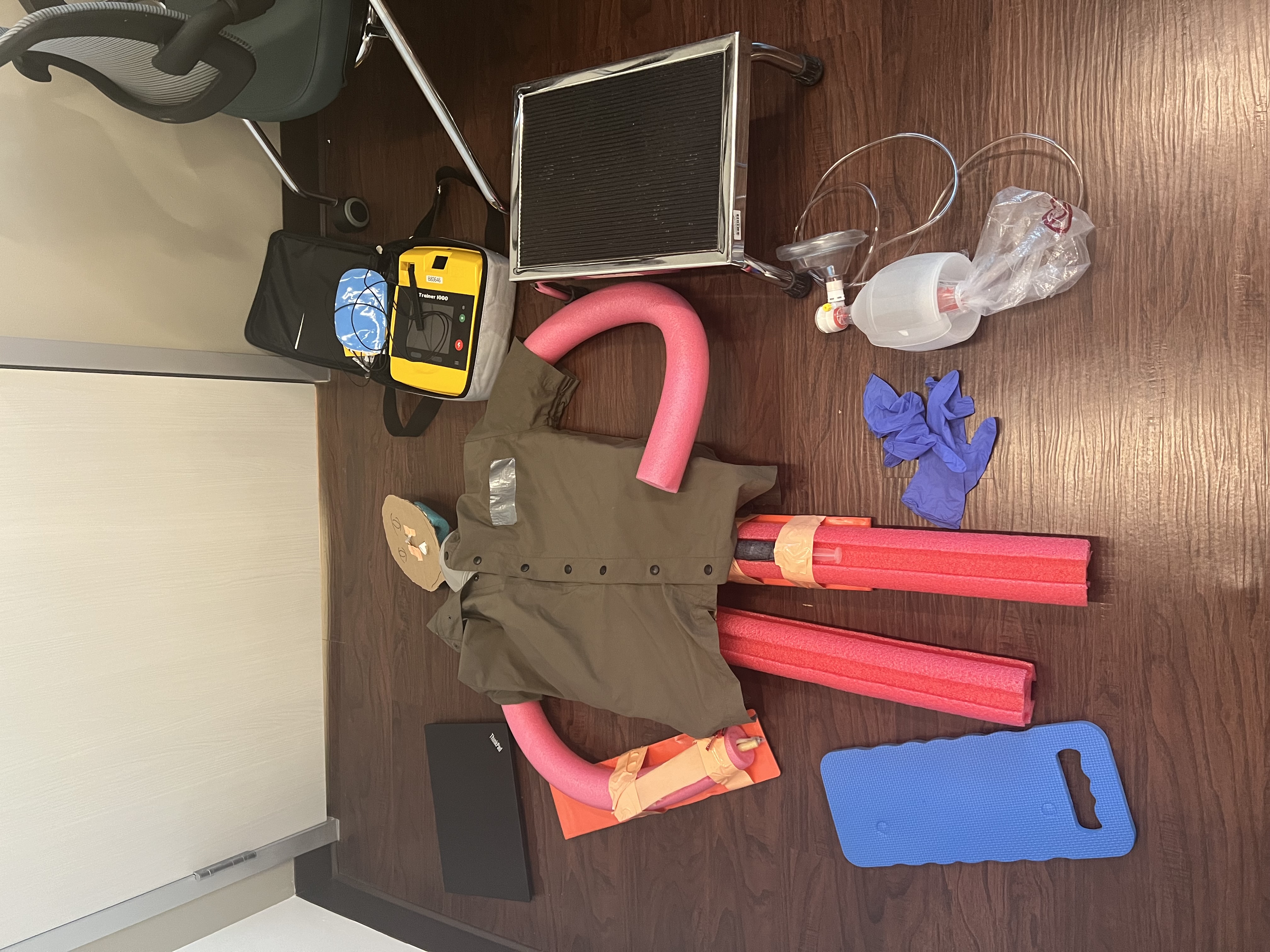Cardiopulmonary Resuscitation (CPR) Introduction Module
Introduction
Welcome to the cardiopulmonary resuscitation (CPR) module! Here you will learn how to create your own completely customizable CPR task trainer, including receiving feedback on your landmarking, depth, and recoil, while also attaching other modules for Advanced Cardiac Life-Saving (ACLS) skills (IV insertion and IO insertion).
In this section there will be:
- A clear list of materials needed to build the task trainer
- Step-by-step instructions for creation of the task trainer
- High quality pictures demonstrating key steps for creation and use of the task trainer
- A cost breakdown for the task trainer, including material sourcing information
Once you have created your task trainer:
- The ‘Skill Station Set-up Guide’ will demonstrate what supplies you should lay out and how you should set-up your task trainer to promote learner success.
- The ‘Teaching / Feedback’ section will provide key frameworks for how to teach this skill and provide constructive feedback to participants based on their level of competency.
- The ‘Evaluation and Resources’ section will describe or link to peer-reviewed and evidence-based checklists that you can use to evaluate on the skill of CPR.
Skill Station Set-up Guide
| CPR Set-up Supplies | |
|---|---|
|  |
Teaching / Feedback
Heart and Stroke Foundation. Learn CPR in less than 90 seconds. https://www.youtube.com/watch?v=mI6FweqA_7U
Rapid Cycle Deliberate Practice
Use of a perform-pause-feedback loop that results in learners practicing steps repeatedly until mastery or competence is achieved.
Important, use deliberate practice when:
- The skill is more about the individual ‘how’ than the ‘why’. AKA it is not good for team processes or complex patient presentations
- When critical steps are important and cannot be skipped or done incorrectly
- The content expert is able to provide meaningful feedback to correct actions and promote learning without leading to burnout between loops
- When muscle memory is important and kinetic feel can help with competency
To perform rapid deliberate practice with your learners, follow these steps:
- Demonstrate the skill or instruct on the skill to ensure understanding from the learner. Set the learner up for success.
- Have the learner perform the skill as a novice.
- Immediately following the simulated practice, provide short feedback, focusing on one or two areas of improvement. Be specific, provide reasoning for the change, and demonstrate as necessary.
- Immediately following the feedback, have the learner perform the skill.
- Immediately following the repeated skill performance, provide feedback. If the learner improved on the previous critiques, note this. If the learner is ready to move forward, provide additional areas for improvement that are specific, and manageable to attain in one attempt.
- Repeat this loop until the learner achieves either competency or mastery in the skill.
(Education Theory Made Practical, 2018; Ericsson, 1997; Hunt et al., 2014)
Evaluation and Resources
Heart and Stroke Foundation of Canada (2023). List of manufacturers with compliant feedback devices. https://cpr.heartandstroke.ca/s/article/List-of-Manufacturers-with-Compliant-Feedback-Devices?language=en_US
Heart & Stroke Foundation of Canada (2020). 2020 Guidelines for CPR & ECC. https://cpr.heartandstroke.ca/s/article/2020-Guidelines?language=en_US&_ga=2.32497402.57926108.1614612975-1159558938.1585682633
Red Cross (2023). Adult CPR steps. https://www.redcross.org/take-a-class/cpr/performing-cpr/cpr-steps
Red Cross (2023). Child & baby CPR. https://www.redcross.org/take-a-class/cpr/performing-cpr/child-baby-cpr
References
Education Theory Made Practical Volume 2. 2018. Academic Life in Emergency Medicine.
Ericsson KA. 1993. The role of deliberate practice in the acquisition of expert performance psychological review. Psychological Review 100(3):363-406. DOI:10.1037//0033-295X.100.3.363.
Hunt et al. 2014. Pediatric resident resuscitation skills improve after RCDP training. Resuscitation Jul;85(7):945-51. doi: 10.1016/j.resuscitation.2014.02.025.